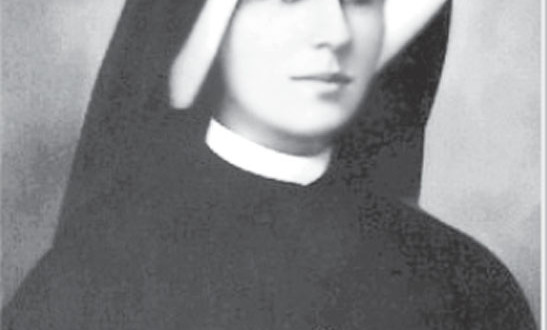BY ALGIS GINTAUTAS
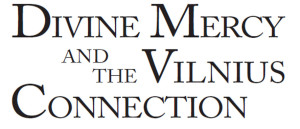
Today the devotion to the Divine Mercy is widespread among Catholics across the globe, thanks to a humble, frail nun who became God’s chosen messenger to spread His word through a diary she wrote and an image she instructed to be painted in Vilnius.
DURING HIS LONG REIGN AS pope, John Paul II canonized hundreds of saints, more that all his predecessors combined. As it was usually the case with previous popes, most of those canonized by John Paul II were Western Europeans, although he also canonized some Latin American, Oriental, and Eastern European saints. Among the later were two Poles with Lithuanian connection: Saint Jadvyga (Hedwig), a 14th century queen, and Saint Maria Faustina Kowalska, an early-20th century nun. No Lithuanians were in the group, although he did beatify Archbishop Jurgis Matulaitis (1871–1927), Bishop of Vilnius during the first quarter of the 20th century.
Saint Jadvyga’s Lithuanian connection consists mainly of her marriage to the Lithuanian pagan king Jogaila. Jogaila converted, and, following the wedding, ascended the throne of Poland with the Christian name of Wladislaw II. He returned to Lithuania, and together with his cousin Vytautas the Great, embarked on the task of baptizing their Lithuanian subjects into the Christian faith. Contrary to what many Polish historians claim, the young queen never visited Lithuania and did not take an active part in the conversion of the Lithuanians. No written records or documents exist to indicate that she did.
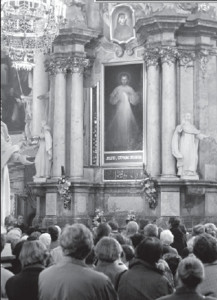
On the other hand, Saint Faustina’s connection to Lithuania is quite extensive. While some Polish scholars try to maximize Saint Jadvyga’s role in the baptism of the Lithuanians, others try to minimize Saint Faustina’s connection to Lithuania. One can clearly see this by reading her biography in books and on Internet websites.
Saint Faustina Kowalska was born on August 25, 1905 in the village of Glogowiec, west of the city of Lodz in Poland, of a poor and religious family of peasants, the third of ten children. (This year marks the 100th anniversary of her birth.) She was baptized with the name Helena in the parish church of Saint Casimir in Swinice Warckie two days later. She attended school for less than three years. At the age of sixteen, in order to support herself and help her parents, she went to work as a housekeeper in the households of well-to-do families. In 1922 she told her parents it was time for her to move on, not to a career or higher education, but a higher calling. In 1925, at the age of twenty, she entered the Congregation of the Sisters of Our Lady of Mercy. A year later she received her religious habit and the religious name of Sister Maria Faustina of the Most Blessed Sacrament. On May 1, 1933, she took her perpetual vows.
Sister Faustina lived in the congregation for thirteen years in several religious houses. She spent time at Cracow, Plock, and Vilnius, where she worked as a cook, gardener, and porter. This is pretty much the extent of what her biographies say about her life in Lithuania. What they fail to mention (perhaps intentionally) is that she spent her most interesting, creative, and productive spiritual years in Vilnius. Nowhere in any of her biographies do we find the name of Lithuania mentioned. And there is a reason for this. Those familiar with 20th century Lithuanian history know that in 1920 the Polish Army invaded Lithuania and occupied the Vilnius territory, which was subsequently, and illegally, annexed to Poland. Poland claimed that Vilnius (they called it Wilno) was a Polish city, when in reality it had never been part of Poland. Lithuania regained Vilnius in 1939 at the start of World War II. Sister Faustina’s Polish biographers cannot forget this.
On May 27, 1933, Sister Faustina was transferred to Vilnius, where she stayed until March 20, 1936. There she met an extraordinary man, Father Michael Sopocko, who became her confessor and spiritual director. Under Father Sopocko’s advice, Sister Faustina began a diary — Divine Mercy in My Soul, in which she recorded all her daily activities, revelations, and extraordinary spiritual experiences.
Father Sopocko was born near Vilnius in 1888. Between 1910 and 1914 he studied theology at the University of Vilnius (some biographies say at the seminary in Vilnius.) Later he was ordained subdeacon in Kaunas. He went to Warsaw where he became chaplain in the Polish Army during the First World War. He returned to Vilnius in 1924 at the request of Bishop, later Archbishop, Jurgis Matulaitis. After obtaining his doctorate in moral theology in 1926, he became the Spiritual Director of the seminary. He worked as lecturer of pastoral theology in the Theology Department of Vilnius University (renamed the Stefan Batory University) and in the Higher Theological Seminary in Bialystok (Balstogė) during 1928-1962. Father Sopocko died in 1975 in Bialystok. The Congregation for the Causes of the Saints in Rome promulgated a decree that stated the heroicity of the virtues of the Servant of God Father Sopocko. His beatification process began in 2004, and it is still in progress.
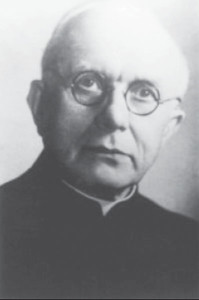
After only a few weeks of convent life, Sister Faustina’s health began to deteriorate. She had contracted consumption and lived through several bouts of this illness. In August, 1934, she suffered a violent attack of asthma for the first time. Although the doctors did not state it, it already was, in all likelihood, tuberculosis, which subsequently progressed to such an extent that in 1938 she spent the last five months of her life in the hospital. Having been brought back to the convent in Cracow, she died there on October 5, 1938 at the age of just thirty three.
The process culminating in the canonization of Saint Faustina Kowalska commenced in 1965, twenty seven years after her death, through the intervention of Karol Vojtyla, then the archbishop of Cracow, and the future Pope John Paul II. Two miraculous healings were presented for consideration. On April 18, 1993, the Feast of the Divine Mercy, Pope John Paul II elevated Sister Faustina Kowalska to the status of Blessed. She was canonized on April 30, 2000 — the Feast of Divine Mercy. Saint Faustina was honored as the first saint of the new millennium.
The Diary
According to what she wrote in her diary, Sister Faustina began to receive messages, revelations, and visions of Jesus Christ and Our Lady while she was still in Poland, and those visions continued throughout her entire life.
Although she began her diary in Vilnius in 1934, in it she also noted her earlier spiritual experiences, some going as far back as 1925. She continued to make notations in the diary until the day of her death.
The entire text of her diary is contained in six notebooks, a total of 477 pages of manuscript.
After Sister Faustina’s death, Father Sopocko had her diary translated from Polish and sent it to the Vatican. But in 1958, the Holy See issued a document condemning it because the translation was erroneous and confusing. It was misinterpreted by theologians who did not take into consideration Sister Faustina’s lack of education (she had less than three years of formal schooling) which resulted in poor spelling and punctuation, and many unclear sentence constructions that suggested heretical teaching. An uneasy political climate at the time made it impossible to verify the original’s authenticity. Father Sopocko was harshly reprimanded, and all his work on behalf of Sister Faustina and the devotion to the Divine Mercy was suppressed.
It was through the intervention of the archbishop of Cracow, Karol Vojtyla, that a new translation was made, and a new investigation into the life and diary of Sister Faustina was finally launched. The devotion to the Divine Mercy was once again permitted.
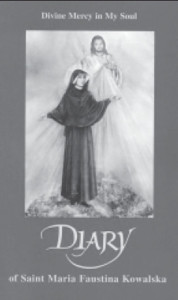
The diary is notable for the many mentions she makes of her personal and spiritual experiences in Vilnius, something that is not included in any of her biographies.
For example, in an entry for the year 1933 she writes: “After perpetual vows (1933), I stayed in Cracow throughout the month of May, because it was undecided whether I was going to Rabka or to Vilnius. The next day she (Mother General) summoned me and said, ‘You wanted to have God’s pure will; very well, then; you are going to Vilnius.’”
In another section she writes, “Tomorrow I am going to Vilnius,” and continues, “That evening I remained in the chapel a little longer. I talked to the Lord about a certain soul. Encouraged by his goodness, I said, ‘Jesus, you gave me this Father (Father Andrasz, her first spiritual director in Cracow —V.K.) who understands my aspirations, and now you are taking him away from me again. What I am going to do in this Vilnius? I don’t know anyone there, and even the dialect of the people there is foreign to me.’”
(Obviously she wasn’t aware that in Lithuania people spoke a different language, not a different Polish dialect —V.K.). She left for Vilnius on May 27, 1933.
Further down, she writes, “I am already in Vilnius today. A few scattered tiny huts make up the convent. It seems a bit strange to me after the large buildings of Josefow. There are only eighteen sisters here. The house is small, but the community life is more intimate. All the sisters received me warmly, which was for me a great encouragement to endure the hardships that lay ahead. Sister Justine had even scrubbed the floor in anticipation of my arrival.”
In another part of the diary, she writes, “When I came to Vilnius for two months to replace a sister who had gone for her third probation (Sister Peter, who worked in the kitchen), I stayed a little longer than two months.” (Actually she stayed in Vilnius for almost three years. —V.K.)
Another entry: “One day, the Mother Superior (Irene) wanting to give me a bit of pleasure, gave me permission to go together with another sister to Calvary to ‘walk the paths,’ as they say. I was delighted.” (The Calvary she refers to is a large open-air Stations of the Cross called Šventos Kalvarijos, located in the northern Vilnius suburb of Jeruzalė, or Jerusalem. These Stations of the Cross were built in the 17th century, and attracted thousands of pilgrims every year. They were destroyed by the communist authorities in 1962, but have been rebuilt since. —V.K.)
There are many other references to Vilnius in the diary, particularly those concerning the Image of the Divine Mercy she was instructed by Jesus to paint.
Saint Faustina Kowalska’s diary – Divine Mercy in My Soul – has been translated into many languages, among others, English, German, Italian, Spanish, Portuguese, Arabic, Russian, Hungarian, Czech, and Slovak. I am not aware of a Lithuanian translation. Hopefully some day, perhaps with the help of some Lithuanian American organization or a generous individual, the Lithuanian religious authorities will be able to publish a Lithuanian translation of Saint Faustina’s diary.
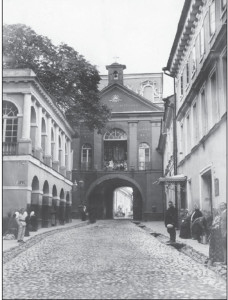
The Image
On the first Sunday in Lent, February 22, 1931, while staying at Plock, Poland, Sister Faustina had a vision of Jesus Christ. During the vision, he told her to paint an Image of him as she saw it. She saw Jesus clothed in a white garment with his right hand raised in blessing. His left hand was touching his garment in the area of the heart, from where two large rays came forth, one red and the other pale. In her diary, she writes Jesus’ words spoken to her: “Paint an Image according to the pattern you see, with the signature ‘Jesus, I Trust in You.’ I promise that the soul that will venerate this Image will not perish. I desire that this Image be venerated, first in your chapel, and then throughout the world. I desire that there be a Feast of Mercy. I want this Image, which you will paint with a brush, to be solemnly blessed on the first Sunday after Easter. That Sunday is to be the Feast of Mercy.”
She told her spiritual director, Father Sopocko, about Jesus’ request. After much hesitation about having a painting done, he agreed. Because Sister Faustina was not an artist, Father Sopocko took her to a local Vilnius artist named Eugene Kazimirowski who agreed to paint the image.
To quote Father Seraphim Michalenko, MIC, who served as Vice Postulator for Saint Faustina’s cause of canonization, “Faustina would come to the artist every so often between January and June of 1934, and every time she came, he would have to change the face because she didn’t like it. It was at least ten times, and maybe more. So finally she came one day, and as far as she was concerned, the Image was ugly.” In her diary, Sister Faustina writes, “Once, when I was visiting the artist who was painting the Image, and saw that it was not as beautiful as Jesus is, I felt very sad about it, but I hid this deep in my heart. I went immediately to the chapel and wept a good deal. I said to the Lord, ‘Who will paint you as beautiful as you are?’ Then I heard these words: ‘Leave it in the state it’s in; it’s not good, but it will do. You don’t have to change it anymore… Not in the beauty of the color, nor of the brush lies the greatness of this image, but in my grace.’”
I would like to point out, that, just recently, it was accidentally discovered that the face on the Image perfectly matches the one on the famous Shroud of Turin.
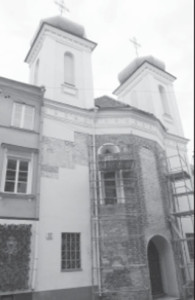
At the request of her spiritual director, Sister Faustina asked the Lord about the meaning of the two rays in the Image. She heard these words in reply:
“The two rays denote blood and water. The pale ray stands for the water which makes souls righteous. The red ray stands for the blood which is the life of souls. These two rays issued forth from the depths of my tender mercy when my agonized heart was opened by a lance on the Cross.”
After the Image had been painted at the request of Sister Faustina’s confessor, he had it hung in the corridor of the convent instead of the church. According to her diary, Jesus told Sister Faustina, “Tell the confessor that the Image is to be on view in the church and not within the enclosure of the convent it is in. By means of this Image I shall be granting many graces to souls; so let every soul have access to it.”
She notes in her diary: “Strangely, all things came about just as the Lord had requested. In fact, it was on the first Sunday after Easter (April 1935) that the Image was publicly honored by crowds of people for the first time. For three days it was exposed and received public veneration. Since it was placed at the very top of a window at Ostra Brama, it could be seen from a great distance. (Ostra Brama is the Polish name for the shrine of Our Lady of the Gates of Dawn, or Aušros Vartai. Ostra Brama means Eastern Gate in Polish. This was the eastern entrance into Vilnius during the Middle Ages when the city was surrounded by a defensive wall — V.K.). At Ostra Brama, during these three days, the closing of the Jubilee of the Redemption of the World was being celebrated, marking the nineteen hundred years that have passed since the Passion of Our Saviour.”
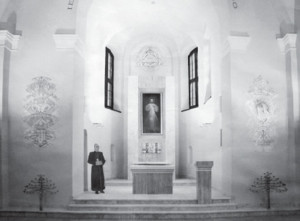
Later, in the diary she writes, “On Friday (April 26, 1935), when I was at Ostra Brama to attend the ceremony during which the Image was displayed, I heard a sermon given by my confessor (Father Sopocko). The sermon about Divine Mercy was the first of the things that Jesus had asked for so very long. When he (Fr. Sopocko) began to speak about the great mercy of the Lord, the Image came alive and the rays pierced the hearts of the people gathered there, but not all to the same degree. Some received more, some less.”
Following that first public display, Father Sopocko moved the painting to a convent next to the church where he was rector. Sister Faustina visited the painting several times before she was transferred to Warsaw in 1936.
Then, World War II came. During the war, which Sister Faustina predicted just before she died, the Divine Mercy Image was bounced from place to place, during which time it suffered neglect and fell into disrepair. But it remained in Vilnius until 1956. Later, for several years, it hung in a small church in Naujoji Rūda, Belarus. When the church closed, the painting was rolled up and stored in a damp attic. According to Fr. Seraphim Michalenko, “It was stored under such poor conditions that some of the paint fell off and the Image had to be touched up. Our Lord’s face was changed from the way it originally looked.”
In 1986, by the intervention of the then priest, and later Catholic archbishop of Moscow Tadeusz Kondrusevich, and the bishop of Gardinas (Grodno in Belarus) Aleksandr Kashkevich, the Image was returned to Vilnius. It was suggested to place it at the Gates of Dawn shrine, where it was first honored in 1935. But, for security reasons, it was decided to hang it on a side wall of the Dominican Church of the Holy Spirit in Vilnius’ Old Town. The church was being renovated at the time, and this way, it was hoped, the picture would not attract the attention of the communist authorities. They were correct. The Image of the Divine Mercy remained safe hanging on an inconspicuous wall of the church until independence came.
When Pope John Paul II came to Lithuania in 1993, among the places he visited was the Church of the Holy Spirit where he prayed at the foot of the Divine Mercy Image.
Since for many years the “Vilnius Image” of the Divine Mercy had been hanging on one side of the Holy Spirit Church, where it was not always noticed by visitors and pilgrims, Cardinal Audrys Juozas Bačkis, Archbishop Metropolitan of Vilnius, decided to give it its own prominent place. In an article in the Summer 2001 edition of the Marian Helper magazine, he stated, “Devotion to Our Lady of Mercy continues to be a popular devotion in Lithuania. But most Catholics there still do not know about Divine Mercy, even thought this is where it started. And many of those who do know about the message of mercy given to Saint Faustina, regard it as a ‘Polish devotion.’ This city really should be known as ‘The City of Mercy.’ We need so much mercy in our world. We have Our Lady of Mercy here, and the original Divine Mercy Image. It adds so much to the pastoral life of the Archdiocese. This Image is very popular in the small churches, but not so much in Vilnius itself.”
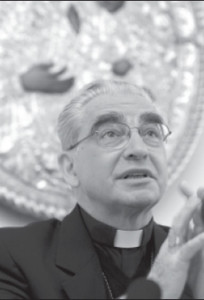
Cardinal Bačkis decided that the neglected and rundown Holy Trinity Church, located on the same street (Dominikonų gatvė) not far from the Holy Spirit Church, would be the most appropriate place for it. He wanted to make it into an international shrine for the first Divine Mercy Image. His dream, as quoted in the same Marian Helper article, was “to convert this church, which is now in ruins, into a Divine Mercy Shrine where people of all nationalities can come to celebrate Mass in their own language and pray the Chaplet to Our Merciful Jesus.”
By renovating Holy Trinity Church, Cardinal Bačkis said he hoped Vilnius would truly become recognized for spreading mercy. The Gothic-style 15th century church was chosen because of its central location and because it was not being used as a house of worship. The building has a fascinating history.
It was damaged by fire in 1748, converted to a Russian Orthodox church in the 1820s, returned to the Catholics a century later, then taken over by the communist government following the Second World War. It was used as a workshop to build and repair organs during the communist era. The government finally returned the deteriorated church to the Archdiocese in 1998. “During this time, the government neglected the building terribly,” Cardinal Bačkis said. “They didn’t do any maintenance at all.”
Cardinal Bačkis embarked on the difficult task of renovating the small church. This involved considerable time, effort, and cost. “It’s a lot of work for a small church,” he said in 2001. “The whole church is in a state of extreme decay, so we have to repair and replace everything from the foundation to the roof. The entire renovation will cost about $100,000. We will do it bit by bit,” he said while examining gaping holes in the floor. With help from the Congregation of the Marians of the Immaculate Conception and the Association of Marian Helpers, the Cardinal accomplished the task.
In 2003, Cardinal Bačkis had the painting restored to its original condition by an expert artist. Until then, nearly every “Vilnius Image” of the Divine Mercy had been made from a reproduction of a black and white photograph that was inaccurately colorized, and consequently none of those images ever reflected the true beauty and color of the original painting. Several other artists painted their own versions of the Divine Mercy, but the “Vilnius Image” is the true original one, painted under Saint Faustina’s recollection and direction.
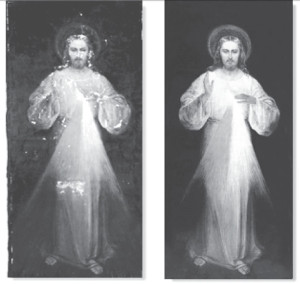
When it was time for the painting to be moved to its new home, the Polish parishioners of Holy Spirit refused to let it go. Although the Image had been housed temporarily in their church for safekeeping, they became angry, staged protests and demonstrations, and would not allow the picture to be moved. Cardinal Bačkis even traveled to the Vatican for consultations with the Holy Father. To date all his efforts have been fruitless, and he had to contend with hanging a reproduction of the Image above the altar of the renovated Holy Trinity Church, waiting for a better day.
Just down the street, in the Church of the Holy Spirit, the original Divine Mercy Image is still on the wall. However, in Cardinal Bačkis’ opinion, it is not the best permanent home for it, because the parish only serves Polish speakers in Vilnius. He wants to stress the universality of the message and devotion, creating a shrine for all people in Lithuania and from around the world. The Cardinal envisions the day the Image will be carried in a grand procession to its new home, only 500 yards away.
“It will be a great day,” he says. “The Divine Mercy deserves a permanent home in this city, a home where all can come to worship and pray for God’s mercy on our land and on our world.”
 DRAUGAS NEWS Lithuanian World Wide News in English
DRAUGAS NEWS Lithuanian World Wide News in English
